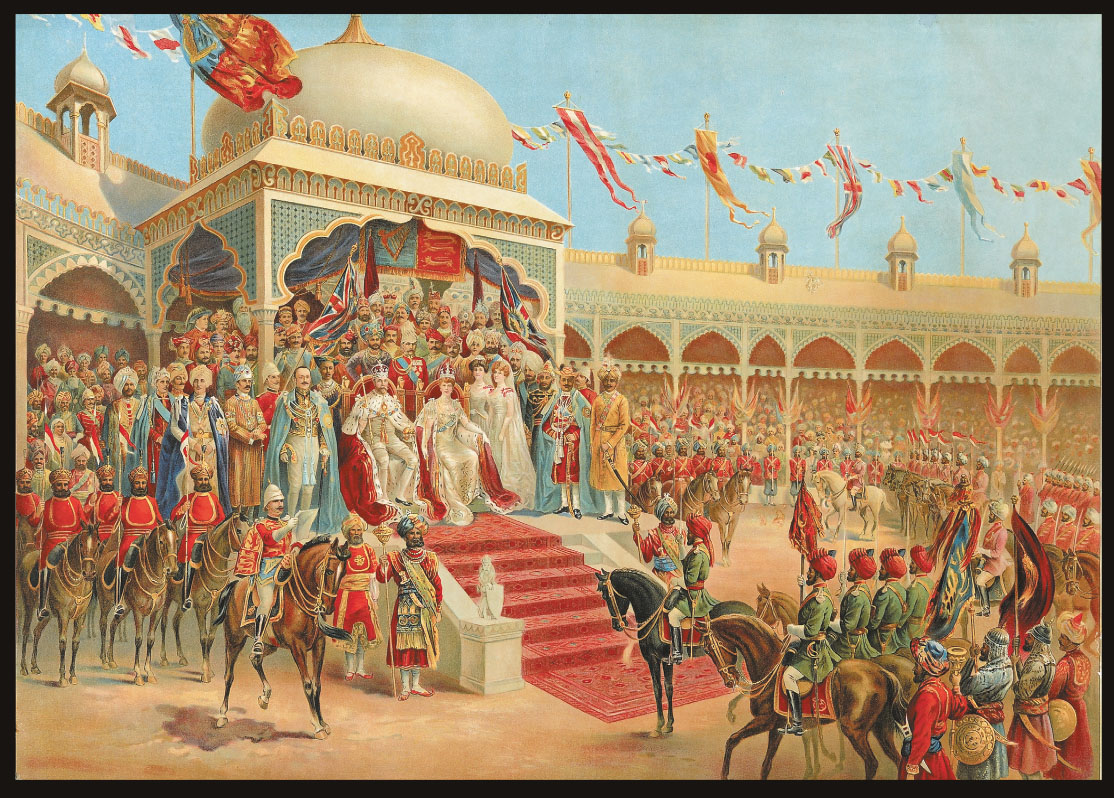![]() Antiquarian Books, Maps, Prints & Photographs II
Antiquarian Books, Maps, Prints & Photographs II
![]() Antiquarian Books, Maps, Prints & Photographs II
Imperial Delhi Durbar
Antiquarian Books, Maps, Prints & Photographs II
Imperial Delhi Durbar
CONTACT US
Catalogue & Viewing
Lot Closed
Accounts & Shipping
Lot Closed
-
Details
 Details
Details
Their Majesties King George & Queen Mary with the ruling Princes and Rajah of India; original coloured lithograph. Copyrighted, printed & published by A. Vivian Mansell & Co., London, c. 1911 Mounted, glazed and framed.
-
Literature
 Literature
Literature

DELHI DURBAR
The Delhi Durbar meaning, “Court of Delhi”, was a mass assembly at Coronation Park, Delhi, India, to mark the coronation of a King and Queen of the United Kingdom.Also known as the Imperial Durbar, it was held three times, in 1877, 1903, and 1911, at the height of the British Empire. The 1911 Durbar was the only one to be attended by the sovereign, in that particular case George V. The term was derived from common Mughal term, durbar.
Held in December to commemorate the coronation of King George V and Queen Mary as Emperor and Empress of India. Practically every ruling prince, nobleman, landed gentry and other persons of note in India attended to pay obeisance to their sovereigns. The Sovereigns appeared in their Coronation robes, the King–Emperor wearing the Imperial Crown of India with eight arches, containing six thousand one hundred and seventy exquisitely cut diamonds, and covered with sapphires, emeralds and rubies, with a velvet and miniver cap all weighing 34.05 ounces (965 g). They then appeared at a darshan (a sight) at the jharoka (balcony window) of Red Fort, to receive half a million or more of the common people who had come to greet them.A feature film of the coronation titled With Our King and Queen Through India (1912)––also known as The Durbar in Delhi––was filmed in the early color process Kinema color and released on 2 February 1912.
There is a magnificent tiara belonging to the present Queen called the Delhi Durbar Tiara. The necklace was presented to Queen Mary by the Maharanee of Patiala on behalf of the Ladies of India to mark the first visit to India by a British Queen–Empress.At the Queen’s suggestion, it was designed to match her other emerald jewellery created for the Delhi Durbar. In 1912 Garrards slightly altered the necklace, making the existing emerald pendant detachable and adding a second detachable diamond pendant. This is an 8.8 carats (1,800 mg) marquise diamond known as Cullinan VII, one of the nine numbered stones cut from the Cullinan Diamond. The necklace was inherited by the Queen in 1953 and was recently worn by the Duchess of Cornwall to a ball where she met the Norwegian Royal Family.
Today Coronation Park is a jealously guarded open space whose emptiness comes as a bit of a shock after the dense traffic and crowded shanty towns of northern Delhi’s urban sprawl. It is mostly overgrown, neglected and locked. The Park is sometimes used for big religious festivals and municipal conventions.
